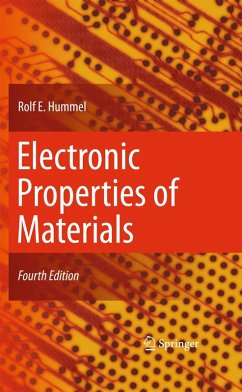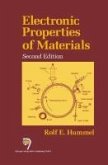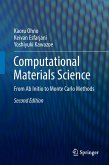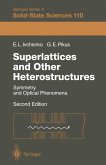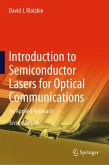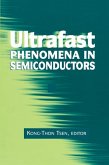This book on electrical, optical, magnetic, and thermal properties of materials differs from other introductory texts in solid-state physics. First, it is written for engineers, particularly materials and electrical engineers, who what to gain a fundamental understanding of semiconductor devices, magnetic materials, lasers, alloys, and so forth. Second, it stresses concepts rather than mathematical formalism, which should make the presentation relatively easy to read. Third, it is not an encyclopedia: The topics are restricted to material considered to be essential and that can be covered in one 15-week semester.
The book is divided into five parts. The first part, "Fundamentals of Electron Theory," introduces the essential quantum mechanical concepts needed for understanding materials science; the other parts may be read independently of each other. Many practical applications are discussed to provide students with an understanding of electronic devices currently in use. The solutions to the numerical problems are given in the appendix.
Previous editions have been well received by students and teachers alike. This Fourth Edition has again been thoroughly revised and brought up to date to take into account the explosive developments in electrical, optical, and magnetic materials and devices. Specifically, new topics have been added in the "applied sections," such as energy saving light sources, particularly compact fluorescence light fixtures, organic light-emitting diodes (OLEDs), organic photovoltaics (OPV cells), optical fibers, pyroelectricity, phase-change memories, blue ray disks, holographic versatile disks, galvanoelectric phenomena (emphasizing the entire spectrum of primary and rechargeable batteries), graphene, quantum Hall effect, iron-based semiconductors (pnictides), etc. to mention just a few subjects.
The book is divided into five parts. The first part, "Fundamentals of Electron Theory," introduces the essential quantum mechanical concepts needed for understanding materials science; the other parts may be read independently of each other. Many practical applications are discussed to provide students with an understanding of electronic devices currently in use. The solutions to the numerical problems are given in the appendix.
Previous editions have been well received by students and teachers alike. This Fourth Edition has again been thoroughly revised and brought up to date to take into account the explosive developments in electrical, optical, and magnetic materials and devices. Specifically, new topics have been added in the "applied sections," such as energy saving light sources, particularly compact fluorescence light fixtures, organic light-emitting diodes (OLEDs), organic photovoltaics (OPV cells), optical fibers, pyroelectricity, phase-change memories, blue ray disks, holographic versatile disks, galvanoelectric phenomena (emphasizing the entire spectrum of primary and rechargeable batteries), graphene, quantum Hall effect, iron-based semiconductors (pnictides), etc. to mention just a few subjects.
Dieser Download kann aus rechtlichen Gründen nur mit Rechnungsadresse in A, B, BG, CY, CZ, D, DK, EW, E, FIN, F, GR, HR, H, IRL, I, LT, L, LR, M, NL, PL, P, R, S, SLO, SK ausgeliefert werden.
From the reviews of the fourth edition:
"This is an excellent book for materials and electrical engineers, as well as advanced students. This book is divided into five distinct and self-contained parts, which makes it easier for the reader to find information on a particular area of interest. ... contains many applications and problems that help to bridge the gap between physics and engineering. ... For practicing engineers, this would be a good reference book. It would also be useful for someone looking to gain an overall concept of device physics." (Ishtiaque Ahmed, Optics & Photonics News, April, 2012)
"This is an excellent book for materials and electrical engineers, as well as advanced students. This book is divided into five distinct and self-contained parts, which makes it easier for the reader to find information on a particular area of interest. ... contains many applications and problems that help to bridge the gap between physics and engineering. ... For practicing engineers, this would be a good reference book. It would also be useful for someone looking to gain an overall concept of device physics." (Ishtiaque Ahmed, Optics & Photonics News, April, 2012)

